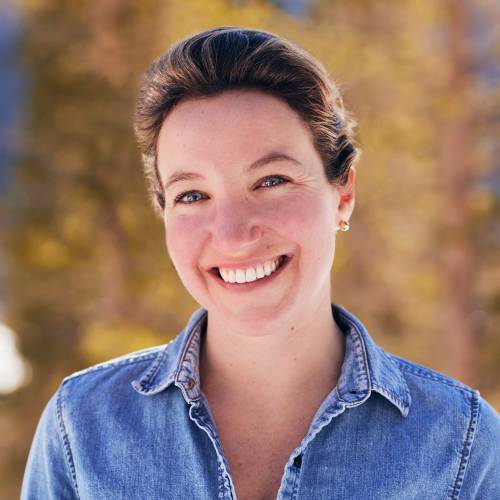
The Science behind Gas Stoves
RMI talks with two public health experts to sort through what we know, what we don’t know, and what we should focus on when it comes to gas stoves, health, and the climate.
Gas stoves suddenly shot to the front of our collective public consciousness this year, appearing everywhere from late night TV to parenting blogs. A flurry of research and proposed policies have continued to drive interest in the ubiquitous household appliance.
All of that attention can make it difficult to answer one key question: Are gas stoves a health and climate risk, and if so, how much?
I spoke with two public health experts, Dr. Daniel Carrión and Dr. Robert Dubrow of the Yale School of Public Health, to sort through what we know, what we don’t know, and what we should focus on when it comes to gas stoves, health, and the climate.
Brady Seals (BS)

Let’s start with the big picture. When you look at the decades of research on gas stoves and health impacts, what are the most important takeaways?
Dr. Daniel Carrion (DC)

One thing that is conclusively true is that gas stoves emit air pollution.
They are known to produce nitrogen dioxide, particulate matter, carbon monoxide, and a whole host of other compounds that are collectively called volatile organic compounds. Some of those compounds are known to be carcinogens and others are suspected carcinogens.
Dr. Robert Dubrow (RD)

I’ll focus on nitrogen dioxide (NO2), the primary air pollutant from gas stoves.
We know that exposure to NO2 is associated with asthma exacerbation and probably also the development of asthma itself. A lot of studies have measured indoor concentrations of NO2 when gas stoves are in operation, and many have found that those concentrations could exceed the one-hour NO2 limit EPA has established for outdoors. It shouldn’t matter if it’s outdoors or indoors, it’s the same exposure. So from that angle, it’s pretty clear that gas stoves are a problem.
BS: That’s really helpful. We frequently see the argument that the method of cooking matters more, and regardless of whether you’re cooking on electric or gas, it’s going to produce pollution. Could you distinguish some of the pollution sources for people who may be confused?
DC: It’s true that the process of cooking — if you are frying, for example — can produce forms of air pollution that are concerning. However, these studies looked at populations and not everyone is frying every day, but air pollution levels are still going up in people’s homes and those are linked to asthmatic exacerbations. So whether or not it’s the case that there are certain forms of cooking that are increasing air pollution, we know that the combustion method is a source that we can actually control. That’s not about people’s behaviors, it’s about what’s actually in people’s homes.
BS: Studies show electric stoves produce no NO2 — there’s no flame and nothing’s burning, so you won’t get those combustion pollutants.
You’ve mentioned asthma exacerbation, so I’d like to dig into that more — what do we know about the relationship between gas stoves and asthma?
DC: We’re pretty convinced as a scientific community that NO2 levels cause asthmatic exacerbations. The area where there is some debate is whether NO2 causes the development of asthma. It’s a trickier thing to study — air pollution is a mixture of things; it’s not just one thing.
The gold standard in epidemiology is the randomized controlled trial, where you can say one person gets assigned this exposure to see if they get this health outcome, but you can imagine how incredibly unethical it would be to conduct that with NO2 and asthma in children who previously did not have gas stoves.
Randomized studies have been done on mice and rats and many of those studies identify that exposing those animals to higher levels of NO2 yields the kind of allergic sensitization and symptoms that are similar to what we would call asthma in humans.
RD: You have the same problem for studying any toxic exposure where you can’t do a randomized controlled trial, so you have to rely on observational data as well as animal and in vitro data. Often the data is so convincing that you could essentially still conclude causality. I think cigarette smoking is a perfect example of that. No one questions whether cigarette smoking causes lung cancer and other diseases. The weight of the evidence is so strong.
BS: So, in the absence of randomized control trials, what else are we left to rely on?
RD: We use the relative risk (or a similar measure — the odds ratio) to measure the risk in a person who’s exposed compared to the risk in the person who’s not exposed. It’s a ratio. In a randomized controlled trial, you’ll also calculate a relative risk, but if the trial is done well, you’ve likely eliminated what we call confounding.
So, for example, if a child lives in a household with smokers, how do you know it’s really the stoves in the household that are causing the exacerbations and not the smoking? There are statistical methods to control for these other factors, like having smokers in households. None of these methods are perfect, but that’s why it’s important to use systematic reviews and meta-analyses, which combine the results of multiple independent studies, to look for consistency of results, because it’s unlikely, although not impossible, that you’d have the same source of confounding across a range of studies, which would lead to an incorrect conclusion.
DC: I think one of the reasons that people often get tripped up with this is that a lot of people think about risk to themselves individually. Epidemiologists are typically talking about risks for the population as a whole. So, if I have a child with asthma and I’m using a gas stove and I notice that they don’t get exacerbations, then you may falsely conclude for yourself that that risk doesn’t exist for others.
RD: Another way to look at this is the importance of using the precautionary principle, which basically says we should err on the side of caution in developing public health policy. We don’t need absolute proof that something is a hazard in order to act — because we want to protect people. So a preponderance of evidence is enough or a good body of evidence is enough to take action. And I think that the population attributable fraction paper that RMI co-authored was a contribution in saying that, okay, this is important from a public health perspective, and it would really be helpful to take action.
BS: One question I hear a lot is: If we’ve had this research on gas stoves and health impacts for so long, why hasn’t anything been done to reduce the risk?
DC: We are fortunate that ambient air quality has improved dramatically in the United States over 50 years. But now we know that increasingly, indoor exposures make a larger proportion of our overall exposure profile. And so it may be the case that this is a ripe moment because we have done a good job regulating outdoor air quality and we now have the benefit to focus on indoor air quality to reduce those exposures as well.
RD: The Clean Air Act was about ambient outdoor air pollution, and there’s no comparable act for indoor air pollution. When the act was passed, ambient outdoor air pollution was much worse than it is now, so it made sense to focus on it. But now, as Daniel said, there really should be more of a focus on indoor pollution because it’s causing a larger proportion of the pollution.
BS: Is there anything else we should discuss?
RD: I’d like to make one final point, which is that we haven’t talked about climate change. So even if there were no NO2 issue with gas stoves and no asthma issue, we need to phase out gas stoves because of the methane and CO2 they emit, both greenhouse gases that cause climate change. Now, we have two reasons to start phasing out gas stoves that are very important – to mitigate climate change and to protect against indoor air pollution. In addition, by dealing with climate change we’re also dealing with a whole host of health issues associated with climate change.
DC: We often talk about this idea of co-benefits, which is that if we mitigate greenhouse gas emissions, it often has immediate health impacts. And I think increasingly we have an opportunity to target those co-benefits to communities that experience health disparities, what I call double mitigation. We know that indoor air quality is another concern for health disparities, and so this is an opportunity to try and intervene to move towards health equity.
BS: That seems like an excellent point to end on. Thank you both so much for your time and expertise.
